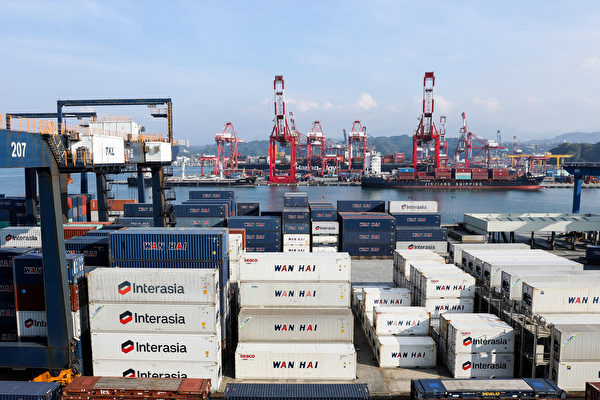Taiwan’s Ministry of Economic Affairs announced today the results of the “Overseas Production Situation Survey of Export Orders” for the year 2023. The report revealed that the local production ratio of export orders in Taiwan reached a record high of 49.1%, the highest in 11 years. This reflects a trend towards diversified supply chain layout, with a decreasing production rate in mainland China.
According to the Ministry of Economic Affairs, the survey aimed to understand the production locations, product sales channels, and production line transfers of exporters receiving overseas orders. The survey has been conducted annually since 2011. In 2024, a total of 2,826 companies were surveyed, with a response rate of 98.9%.
The results of the survey indicated that in 2023, the ratio of orders produced locally in Taiwan reached 49.1%, a 0.3% increase from the previous year and the highest since 2013. This increase was driven by the growing demand for emerging technologies such as IC design, servers, laptops, and networking products, leading to an expansion of local production by manufacturers.
Meanwhile, the production rate in mainland China and Hong Kong decreased to 37.8%, down by 0.9% from the previous year, marking a new low since 2010. In contrast, the ASEAN region accounted for 7.0%, ranking third and reaching a new high. Factors such as the ongoing US-China trade tensions and geopolitical risks have continued to influence the global supply chain restructuring, making ASEAN countries important production bases for Taiwanese businesses, with Vietnam being the largest at 2.6%.
In terms of production methods for export orders in 2023, “self-production (including delivery by subsidiaries or affiliates)” accounted for 81.7%, the highest among methods. This was followed by “outsourcing production to other factories” at 9.7% and “purchasing products from other factories” at 8.5%. The decrease in self-production was attributed to a reduction in orders for laptops, wafer outsourcing, and printed circuit board manufacturers, while an increase in orders for chip distributors led to a rise in purchasing products from other factories.
Regarding company types, both manufacturers and manufacturing/trading companies predominantly engaged in “self-production,” accounting for 91.6% and 85.0%, respectively. In contrast, trading companies mainly relied on “purchasing products from other factories,” making up 81.0%. Regardless of domestic or overseas production, “self-production” remained the dominant method at 86.6% and 76.6%, respectively.
The survey found that out of the sampled companies practicing overseas production, 28.6% cited “meeting customer requirements” as the primary reason, followed by “low production costs” at 45.7%. This indicates that enterprises prioritize customer needs in their global strategies, with the allure of cost-effective production diminishing compared to previous years. Other factors such as “convenient supply of local raw materials” accounted for 37.7%.
In terms of competition, domestic peers were the primary competitors for exporters, comprising 50.4%. However, this percentage decreased by 1.5% from the previous year. Mainland Chinese enterprises accounted for 25.1%, an increase of 2.7%. European and American enterprises held 9.1% and 7.7%, respectively, ranking third and fourth. Analyzing specific product categories, information and communication products had the highest proportion of competition from domestic peers at 70.2%, with over 50% of electronic products also facing competition from local businesses. The competition from mainland Chinese enterprises increased compared to the previous year across various product categories.
In terms of the sales channels for products produced overseas for export orders, 69.1% were sold to “third countries,” while local sales increased to 25.8%, reaching a new high since the survey began. This trend indicates a shift towards diversified production layouts and a growing preference for localized supply chains. The remaining 5.1% were sold domestically.
For product categories, except for optical equipment and electronic products in the upstream of the supply chain, which had the highest proportion of “local sales,” other products were mainly exported to third countries. Information and communication products accounted for 84.8%, machinery for 83.3%, and basic metals for 77.3%. Meanwhile, chemical products had the highest proportion of domestic sales at 27.1%, primarily due to the higher proportion of upstream electronic materials being sold domestically.
Analyzing products manufactured in mainland China and Hong Kong, the proportion of exports to the United States continued to decline. Of the export orders produced in mainland China and Hong Kong, 22.2% were destined for the United States, a decrease of 1.3% from the previous year. This shift was influenced by a decrease in orders for laptop manufacturers, combined with the unresolved US-China trade tensions, prompting businesses to shift production to local or other overseas locations. The percentage of products sold locally increased to 28.2%.
In terms of products exported to the United States, machinery accounted for 45.8%, while basic metals accounted for 44.2%. Electronic products and optical equipment were primarily sold locally, making up 61.4% and 54.6%, respectively, due to electronics component and panel manufacturers supplying assembly customers within mainland China.
Furthermore, information and communication manufacturers showed enthusiasm for expanding or establishing production lines across borders. Of the 2,207 exporting companies engaged in self-production in 2023, 87 companies (3.9%) expanded or set up new production lines, with 50 companies expanding and 41 establishing new lines. Information and communication products had the highest proportion of cross-border production expansion or new setups at 24.1%.
The Ministry of Economic Affairs highlighted that ASEAN countries were the top choice for Taiwanese businesses expanding production lines. Among the 50 companies expanding production lines, the majority chose ASEAN countries, accounting for 56.0% of the total expansions. Specifically, Vietnam accounted for 46.0%, followed by Taiwan at 28.0%. The establishment of new production lines also favored ASEAN, with 73.2% of the total, where Vietnam held a 46.3% share. This trend underscored the advantages of ASEAN countries in terms of their geographic proximity, population dividend, regional trade agreements, and Taiwan’s New Southbound Policy. On the other hand, mainland China and Hong Kong were the primary regions for exiting or relocating production lines, representing 70.0%.

